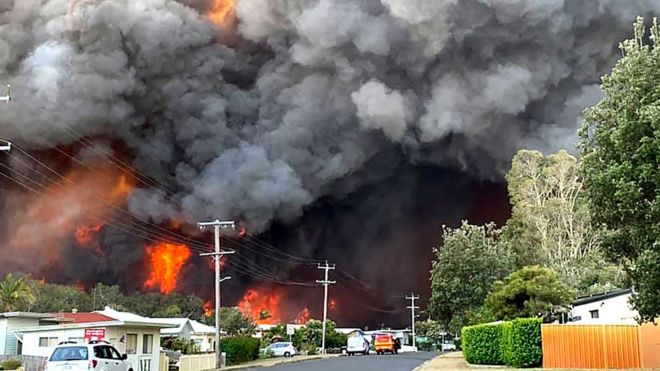had plenty similar on my island
tried hard to get rid of pesky feral cats that did not distinguisn
h between willife for food
This critically endangered skink is getting its own tropical island
Tweet
13
September 11, 2019
RUSSELL MCLENDON
![]()
Photo: Parks Australia
It has been nearly a decade since the last confirmed sighting of a wild blue-tailed skink on Australia's Christmas Island, where the species is now considered extinct in the wild. Scientists managed to collect several dozen of the colorful lizards before they vanished, though, and thanks to a successful captive-breeding program, about 1,500 blue-tailed skinks now live in captivity.
The next step is to start releasing captive-bred skinks back into the wild, hoping they'll establish a new self-sustaining population. But instead of doing that on Christmas Island, where they might face the same threats that wiped out their predecessors, wildlife officials are trying a different approach first: giving the embattled lizards their own private island.
Blue-tailed skinks — not to be confused with North America's
five-lined skink, whose juveniles are also known for their cerulean tails — were abundant on Christmas Island as recently as the late 1970s. They're only about 10 centimeters (4 inches) long, but they radiate color and charisma, as Brendan Tiernan of Parks Australia
recently told Australia's ABC News.
"They have obviously a bright blue shimmering tail, but the rest of their body is also quite colorful, almost rainbow in appearance," Tiernan says, citing their golden back and "brassy burnt-red" head. "When they were in the wild they were quite gregarious and arboreal," he adds, "always moving around, chasing little patches of sunlight."
![]()
The blue-tailed skink of Australia's Christmas Island is likely extinct in the wild, but a captive-breeding program aims to help the species bounce back. (Photo: Parks Australia)
A decline was first reported in 1992, followed by a dramatic crash in the species' population,
according to the International Union for Conservation of Nature (IUCN). The main problem seems to be predation by non-native wolf snakes, which were introduced to Christmas Island in 1982, along with other exotic predators such as feral cats, rats, yellow crazy ants and an invasive centipede.
Researchers collected 64 skinks from Christmas Island in 2009, according to the IUCN, then began breeding them in captivity at two locations. Managed by Parks Australia and the Taronga Zoo, the captive-breeding program has helped the species multiply with impressive speed, increasing the known population of blue-tailed skinks by more than 2,000% in just a decade.
Given the prevalence of exotic predators on Christmas Island, wildlife authorities are wary of releasing captive-bred skinks back there quite yet. While captive breeding has helped other species reclaim their ancestral habitats, captive-bred animals often lack the survival skills and general savvy of those raised in the wild. This sometimes leaves them overly vulnerable
even to native predators, not to mention exotic species that might have already wiped out their wild relatives once before.
![]()
The Cocos (Keeling) Islands consist of 27 small coral islands, located in the Indian Ocean about midway between Australia and Sri Lanka. (Photo: Bildagentur Zoonar GmbH/Shutterstock)
So, rather than starting with Christmas Island, the skinks' caretakers decided to first take them nearly 1,000 kilometers (600 miles) west, to an even more remote — and presumably safer — sanctuary. Their new home is in the Cocos (Keeling) Islands, an archipelago of 27 islands in the Indian Ocean, only two of which are inhabited by people. On Sept. 7, 150 captive-bred blue-tailed skinks were released on Pulu Blan, ABC News reports, a tiny island without people or invasive predators to get in the way.
Pulu Blan is one of two uninhabited islands where authorities plan to release the skinks. The Cocos (Keeling) archipelago was chosen because its climate is similar to that of Christmas Island, but there are some notable differences between the two habitats. The Cocos archipelago is more of an idyllic "beautiful turquoise-blue landscape" dotted with coconut palms, as Tiernan describes it, compared with the more rugged, mountainous karst of Christmas Island.
Despite its relative safety right now, the island chain isn't quite as isolated from humanity as it might seem. Pulu Blan stands no more than 2 meters (6.6 feet) above sea level at its highest point, according to ABC News, giving it little buffer from a rising ocean.
Global sea levels are now rising by 3.4 millimeters (0.13 inches) per year — due to melting ice sheets and thermal expansion of seawater caused by human-induced climate change — and could rise by more than a meter in the next 80 years alone.
Still, as the planet's widespread wildlife declines look increasingly like a
mass extinction, there's a particular urgency to saving rare species these days. The blue-tailed skink populations in the Cocos Islands will be an experiment, according to researchers, who still hope to eventually help the lizards recolonize Christmas Island, too.
![04_Service_dogs_from_K-9_Country_Inn_Working_Service_Dogs_attended_a_relaxed_performance_of_Billy_Elliot_the_Musical_at_the_Stratford_Festival_in_Stratford_Ontario_Canada_on_August_7_2019.jpg.653x0_q80_crop-smart.jpg]()
![02_Service_dogs_from_K-9_Country_Inn_Working_Service_Dogs_attended_a_relaxed_performance_of_Billy_Elliot_the_Musical_at_the_Stratford_Festival_in_Stratford_Ontario_Canada_on_August_7_2019.jpg.838x0_q80.jpg]()
![In_Stratford_Theatre.jpg.838x0_q80.jpg]()





























